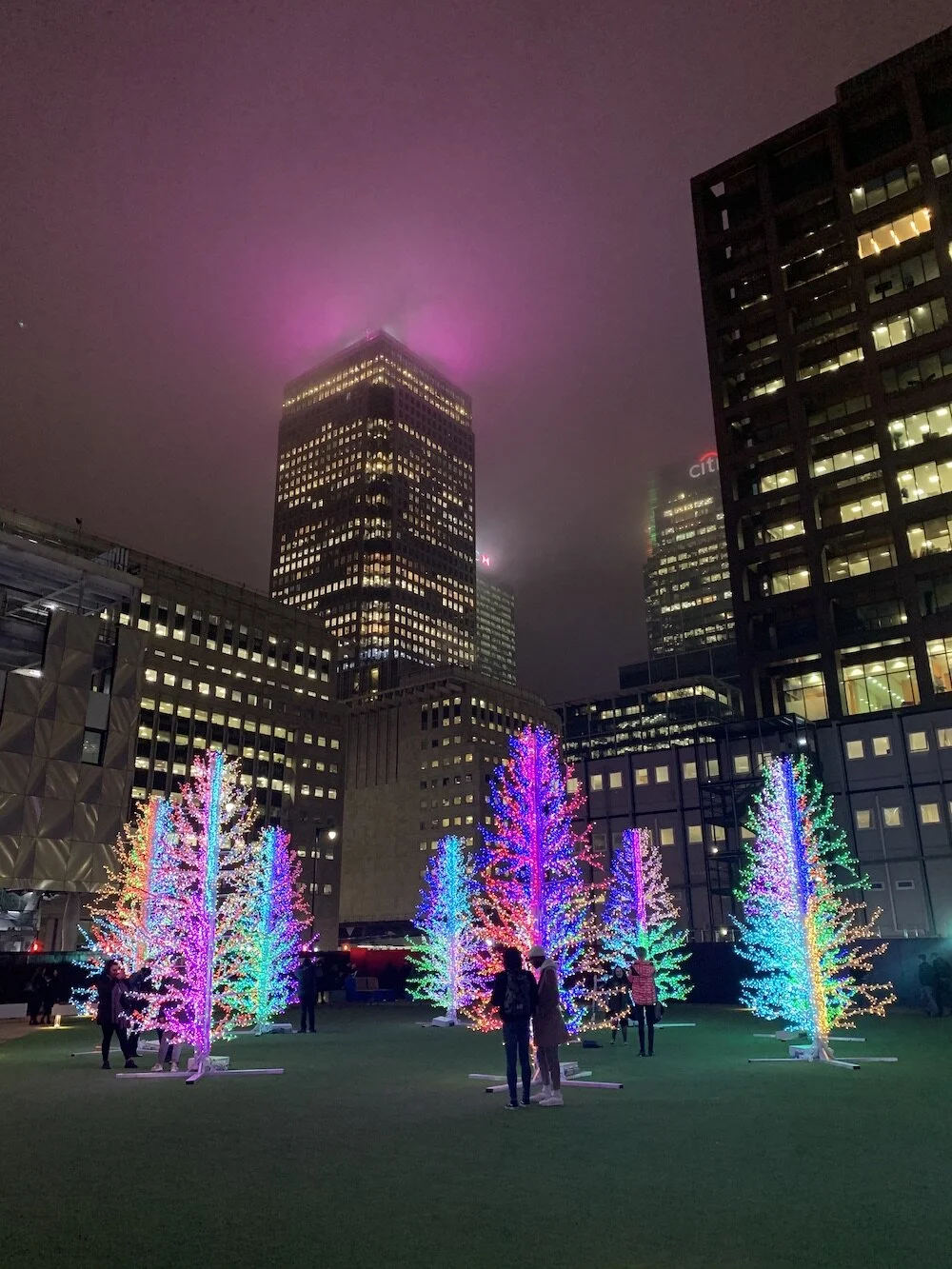Light Festivals
One of the most exciting emerging areas in the development of the evening and night-time economy has been the global rise in light festivals. The pioneer in this area, and still the standard by which all others are judged, is Lyon’s annual Fêtes des Lumières (and it’s no surprise that Lyon has 100% satisfaction with its cultural provision – the only city in Europe to have that; Perucca 2019).
Fêtes des Lumières Lyon attracts 1.8m visitors over the weekend of which 100,000 are international tourists and together they stay 260,000 nights in Lyon’s hotels (whilst spending in the restaurants, bars, shops and other cultural attractions such as museums, which also see a huge spike in visitors). Held in November or early December Fêtes des Lumières is not a specific Christmas event but essentially it fires the gun on Lyon’s festive season.
However, it’s not just big festivals where the impact is big. London has, in a rather haphazard way, seen an increasingly number of light art festivals but on a smaller more site specific rather than city-wide scale. They are often driven by landowners, sometimes with business improvement districts, who want to animate what are cold and sometimes empty spaces in winter. Lumiere London in 2018 sought to unite a number of different sites but has not returned for 2019, leaving smaller events to do the heavy (light) lifting.
One of the best of these (in terms of artistic quality and coherence) that we at MAKE have visited is Canary Wharf’s Winter Lights Festival. Unless you work or live in the belly of the corporate beast that is Canary Wharf, there’s not a lot of reason to visit this citadel of Thatcherite 80s urban and economic policy. However, the good folks at the Canary Wharf management company have obviously realised that cash, suits and a private security army on their own do not the place MAKEth. As a result, they have brought in some very, very good light artists and started to build a reputation that attracts all Londoners to the docks.
This year’s event was perhaps the most impressive yet with 26 pieces, the best of which we thought were from Ottotto (a red tunnel which looked different from every angle), Angus Muir’s recycled illuminated totems and Amigo and Amigo’s atomic architecture, reminiscent of Brussels’ Atomium, yet this structure was glowing from the inside out, and which the viewer, to conduct the lights, stimulating endless luminous possibilities.
Light festivals are fun and utterly Instagrammable but can be criticised as showy and superficial (albeit attractive) pieces of placemaking. However, that’s not always the case. Light City Baltimore for example has been a genuine attempt to reclaim the waterfront of the city for all citizens not just tourists and conferenciers, particularly after the city-wide protests at the death of a member of the African American community whilst in police custody.
Our view is that in principle light festivals are a brilliant addition to the evening and night-time economy. However, they need to be seen not simply as a top down splash of electric colour, but rather the culmination of a process involving local people (including schools and community groups), businesses and business associations and local as well as international lighting designers. They need a clear theme and purpose and a plan for multi-year financial sustainability. Otherwise, they are likely to be simply instances of urban froth, albeit very pretty ones!
For more information on feasibility studies for light festivals and evaluating their economic and social impact click the button below…


